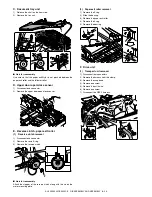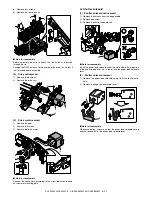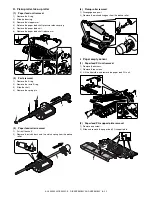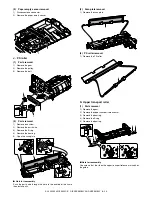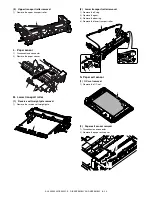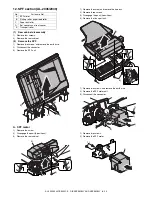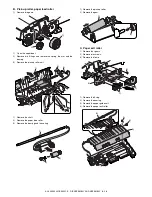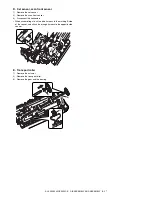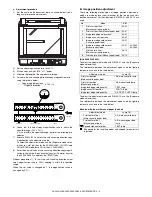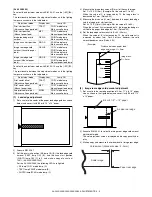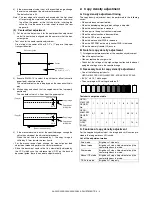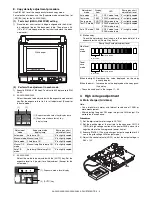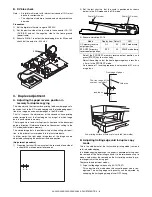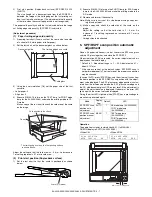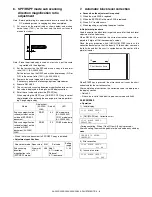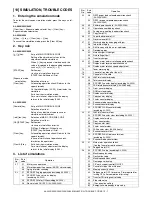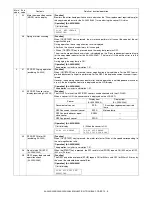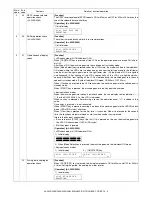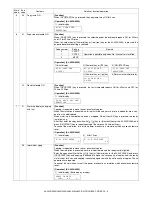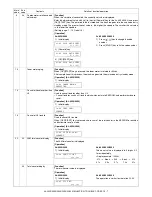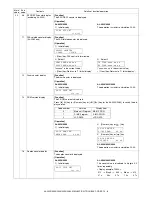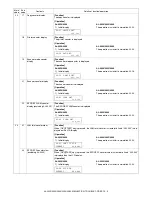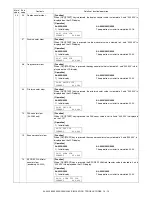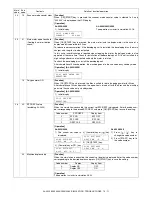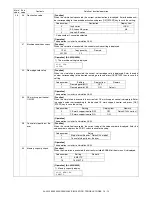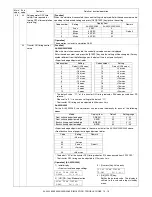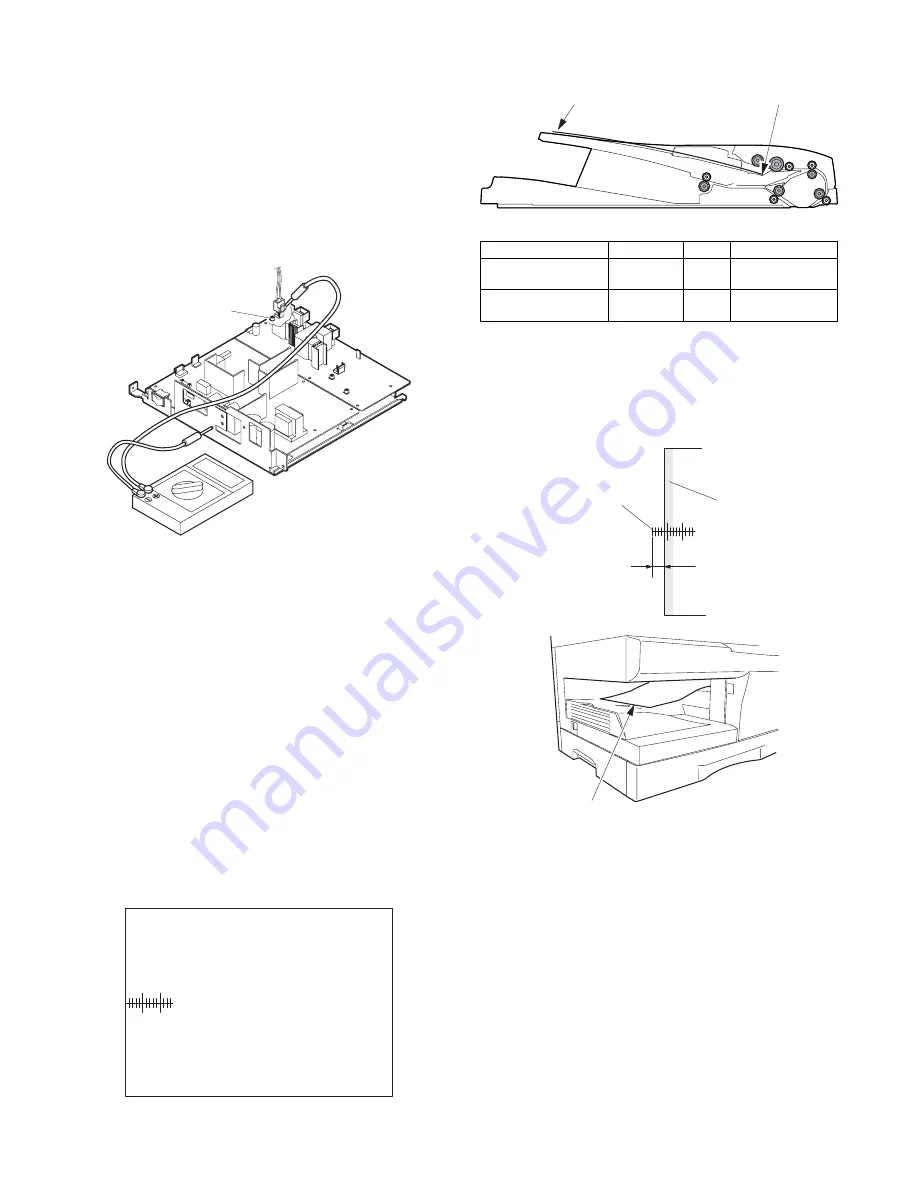
AL-2020/2035/2040/2050/2060 ADJUSTMENTS 9 - 6
B. DV bias check
Procedures
1) Set the digital multi meter range to DC500V.
2) Set the positive side of the test rod to the connector CN-10-1
(DV BIAS) and set the negative side to the frame ground
(power frame).
3) Execute SIM 8-1 to output the developing bias for 30sec, and
check that the output is –400 ± 8V.
4. Duplex adjustment
A. Adjusting the paper reverse position in
memory for duplex copying
This step adjusts the front surface printing (odd-number pages of a
document set) in the S-D mode copying and the leading edge posi-
tion of an image on even-number pages in the D-S mode.
That is, it covers the adjustment of the second surface printing
mode (image loss at the front edge of an image) in which image
data is once stored in memory.
The image data is read, starting from its front end in the document
delivery direction (Reference direction of document setting in the
OC mode)and stored in memory.
This stored image data is printed starting at the printing start posi-
tion, in the order of last-stored data to the first-stored data.
In other words, the front edge image loss of the image can be
adjusted by changing the document read end position.
(Adjustment procedure)
1) Preparing test chart (Draw a scale at the rear end of one side of
a sheet of A4 white paper or letter paper)
2) Set the test chart so that the scale is positioned as shown
below, in the S-D mode and the D-S mode.
3) Execute simulation 50-18.
Select the SPF/RSPF memory reverse output position, and
press [START] key to make a copy.
Adjust the setting so that the front edge image loss is less than
4.0 mm in the SPF/RSPF mode.
An increase of 1 in setting represents an increase of 0.1 mm in
image loss.
B. Adjusting trailing edge void in duplex copy
mode
This is the adjustment of the first surface printing mode (rear end
void) in duplex copying.
In a duplex copying operation, the paper is delivered starting from
the rear end of the first printing surface. It is therefore necessary to
make a void area at the rear end on the first printing surface to pre-
vent paper jam at the fusing part.
There are two adjustment modes:
1) Paper trailing edge void quantity 50-19 (TEXT)
This adjustment is made when the cassette paper size is rec-
ognized. The trailing edge void quantity can be adjusted by
changing the trailing edge image laser OFF timing.
Note: • A digital multi meter with internal resistance of 1G
Ω
must
be use for correct check.
• The adjustment volume is locked, and no adjustment can
be made.
VRDV
5 10
Mode
Display item Default
LED
OC memory reverse
output position
OC
50
COPY mode lamp
SPF/RSPF memory
reverse output position
SPF
50
PRINT mode lamp
Scale (S-D mode)
Scale (D-S mode)
5 10
The front edge of the
scale on test chart
Front edge of paper
Void area
less than 4 mm
2nd printing surface where scale is printed (lower side)
Summary of Contents for AL-2020
Page 217: ...Memo ...


